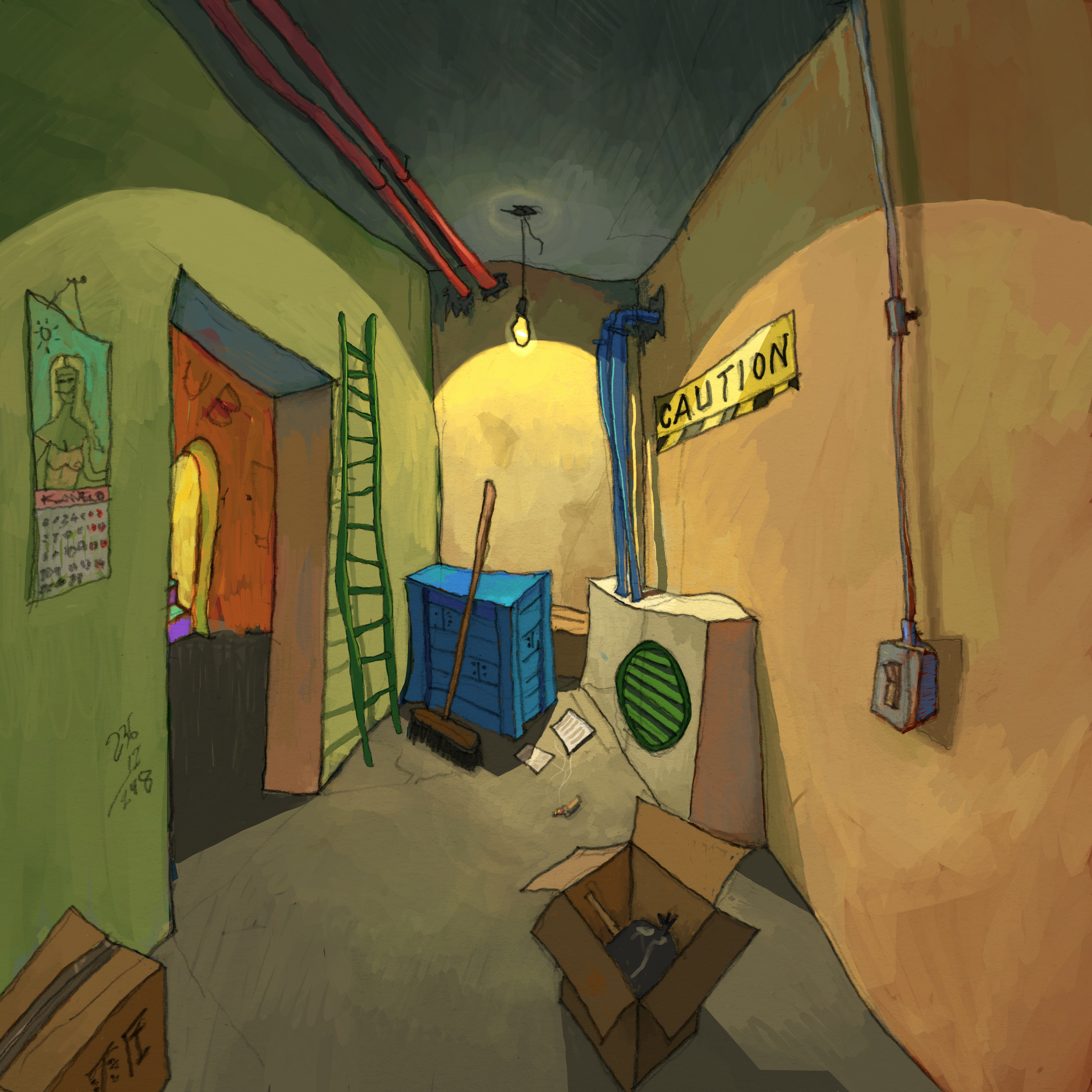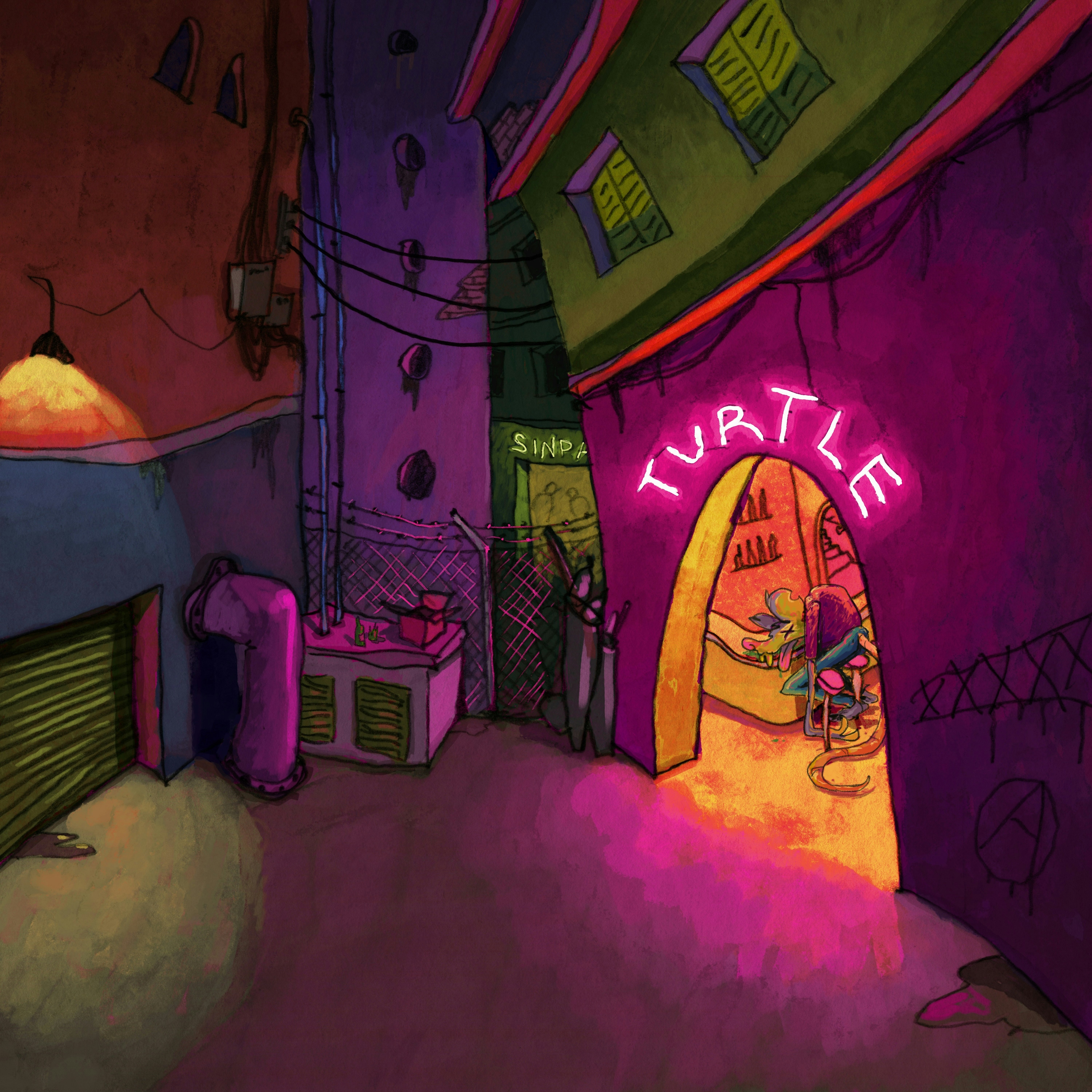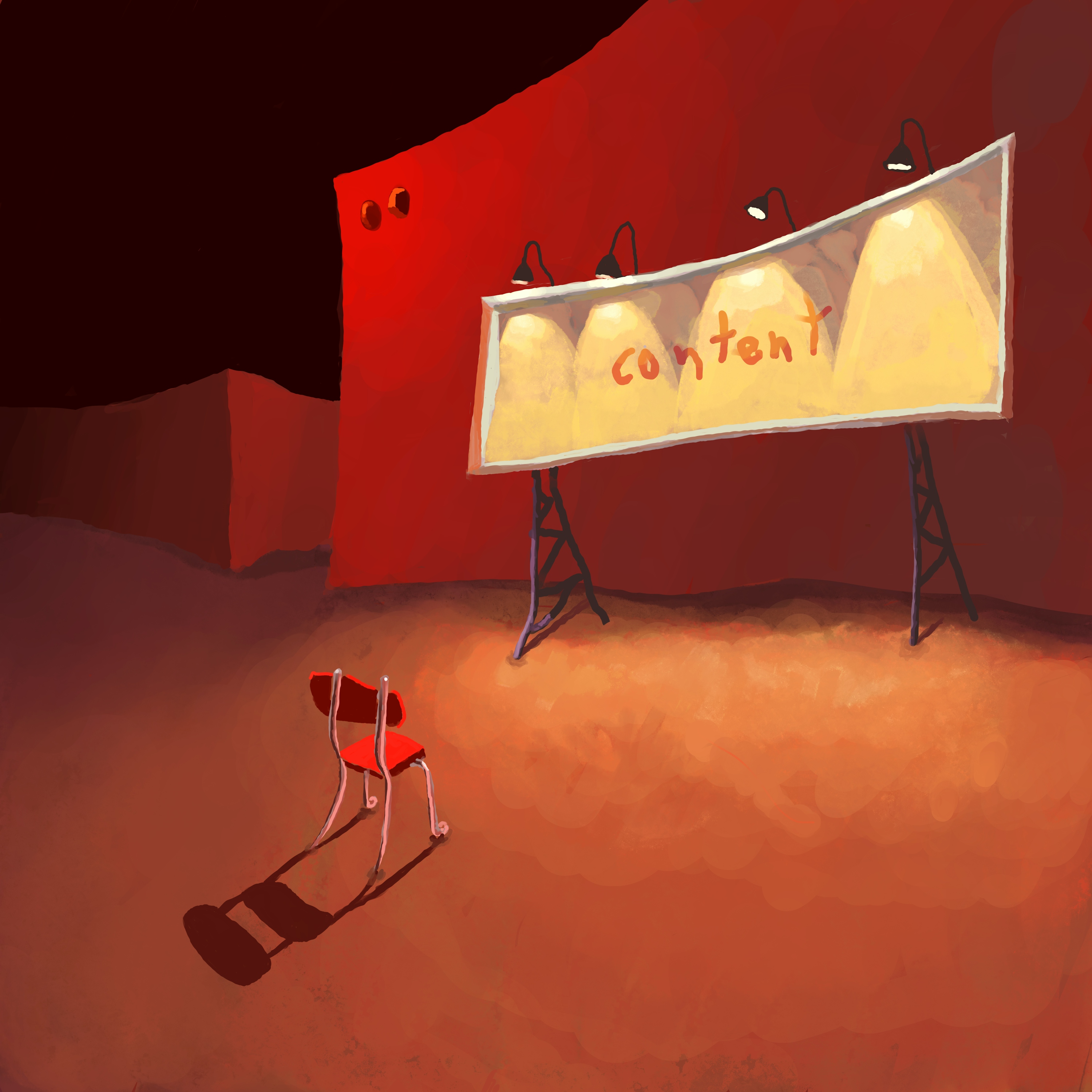When I first entered the NFT space in July of 2021, I hadn’t fully grasped why anyone would buy a work of digital art. Even if blockchain technology could authenticate the original, what kind of person would spend tens of thousands of dollars on something you couldn’t even hold in your hands? Flashing GIFs, strange 3D beings, and photography made without realism in mind seemed far out of reach, especially for those prices.
But one day, while scrolling through the pages of the curated NFT platform that had hired me to help build their art magazine, I came across something colorful, personable, and strange. The artwork, titled “CAUTION,” featured sharp angles brought to life by playfully contorted lines. There was a ladder melting in the corner, a cardboard box in the foreground, and out through the doorway, the whisper of an alley. The style reminded me of the great surrealist painter Giorgio de Chirico, who famously wrote “What is especially needed is great sensitivity: to look upon everything in the world as enigma.” This painting, and the following 100 or so that I looked at on this artist’s profile, are indeed within the realm of enigma.
The artist that captured my interest, and who truly helped me understand why anyone would buy a JPEG, is Nacho Frades.
“En realidad, la escena que pinto es una excusa para iluminarla.”

Nacho was born in Madrid in 1967 and quickly found expression through art. His talent eventually led him to animation; one of the few ways for artists to make a living at that time. “La animación fue lo que más se parecía a pintar,” he told me on a video call. Animation was the thing most similar to painting. “La parte mía fundamental era lighting, o sea, iluminación.” The part that was most fundamental to him was lighting, or rather, illumination.
The way Nacho uses light is one of the reasons I was so drawn to the work. Not only the mastery of it, but the playfulness. In the same way Nacho invited wavering lines and enigmatic versions of ordinary objects, he also gave light permission to operate a bit differently in the scenes he creates.
“En realidad, la escena que pinto es una excusa para iluminarla,” he said. “Puedo pintar cualquier cosa porque lo que me importa es cómo funciona la luz ahí.” For Nacho, the scene he paints is an excuse to create a space which he can illuminate. For this reason, he can paint anything, because the thing that interests him most is how the light functions there in the space he has created.


It comes as no surprise then, that so much of Nacho’s work explores shadowy nighttime scenes brought to life with neon signs, street lights, lamps, and occasionally, stars. In works like “Turtle” and “Content,” the artist adds on layers of color to find out what lies beneath the surface of the canvas. Much like the American novelist Flannery O’Connor who wrote “in order to find out what [she] knew,” Nacho uses light to reveal unexpected characters, like a rat drunk and slumped over a bar, or a chair sitting all by itself looking up at a screen. The light bulb illuminates, and he captures what he sees.
“La luz y el color no son lo mismo,” he interjected. “Con el color se puede conseguir luz, pero el color no es luz. En el iPad y todo eso si es luz, pero no se pinta con luz. Se pinta con color. Lo único que tienes es la paleta de colores, no tienes más.”
The artist quickly points out that light and color are not the same. With color one can get light, but color is not light. On the iPad and all those other tools, yes, it [this creation] is quite literally made of light, but it is not painted with light. It is painted with color. The only thing you have is the color palette. You don’t have anything else.
Nacho creates much of his work at night, when the world is dark and quiet. He is nocturnal, and oftentimes remains awake, and his painting takes the place of sleep. “Yo soy muy nocturno,” he told me. “Entonces, muchas noches me quedo pintando en vez de dormir, me quedo pintando y con la casa en silencio, en la cama con el iPad, la música, y tal no puedo pedir más, no puedo estar más a gusto. Y que más quiere, digo nada, porque yo lo tengo todo.”
With the house encased in silence, in bed with the iPad, music, he couldn’t be more comfortable, he couldn’t ask for more. What more could you want? He says nothing, because in these moments, he has everything. Darkness and light, brought together by music, color, and the stillness of a Spanish night.






































